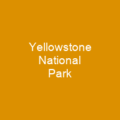The Heart of a Supervolcano: The Yellowstone Caldera
Imagine a giant, sleeping giant lying beneath the picturesque landscapes of Wyoming—this is the Yellowstone Caldera. This massive volcanic caldera and supervolcano has been shaping the Earth’s surface for millions of years. How can such an enormous force remain hidden until it wakes up? Let’s dive into its history and mysteries.
The Formation of a Supervolcano
Over 2.1 million years ago, the Yellowstone Caldera was born from three supereruptions—Huckleberry Ridge, Mesa Falls, and Lava Creek. Each eruption was so powerful that it reshaped the landscape, leaving behind vast expanses of ash and lava. Can you imagine the scale of these events? It’s like a giant eraser, wiping out everything in its path.
Volcanic Activity: A Continuous Process
The Yellowstone hotspot, which lies beneath this caldera, is responsible for the volcanic activity that continues to this day. This plume of hot magma rises through the Earth’s crust, causing both explosive eruptions and less violent lava flows. The last supereruption occurred around 640,000 years ago, forming the Lava Creek Tuff. Since then, non-explosive eruptions have continued to shape the region.
Monitoring the Magma Chamber
The magma chamber beneath Yellowstone is a vast underground reservoir, approximately 80 km long and 20 km wide, with an estimated volume of 4,000 cubic kilometers. Scientists are constantly monitoring this chamber for any signs of activity. The upward movement of the caldera floor has been particularly concerning, rising at rates up to 150 millimeters per year in some areas.
Controversies and Theories
The source of the Yellowstone hotspot remains a topic of debate among geoscientists. Some suggest it’s due to local conditions interacting with upper mantle convection, while others propose a mantle plume origin. An alternate theory even suggests that upwellings from the lower mantle could be responsible for volcanic activity.
Seismic Activity and Earthquakes
The region experiences between 1,000 to 2,000 measurable earthquakes annually. Most are minor, but earthquake swarms can occur, often caused by slips on pre-existing faults rather than movements of magma or hydrothermal fluids.
Future Eruptions: Predictions and Precautions
The likelihood of a future eruption is low, with recurrence intervals being neither regular nor predictable. However, the size of the magma body beneath Yellowstone has been significantly underestimated, leading to new concerns about potential hazards. NASA even proposed cooling the magma chamber by 35 percent as a way to prevent an eruption, but warned of potential risks if drilled into.
Conclusion
The Yellowstone Caldera is more than just a geological curiosity; it’s a living testament to the dynamic forces that shape our planet. While its future remains uncertain, one thing is clear: this supervolcano continues to captivate and challenge scientists, making every day an exciting exploration into Earth’s hidden depths.

You want to know more about Yellowstone Caldera?
This page is based on the article Yellowstone Caldera published in Wikipedia (retrieved on January 1, 2025) and was automatically summarized using artificial intelligence.





